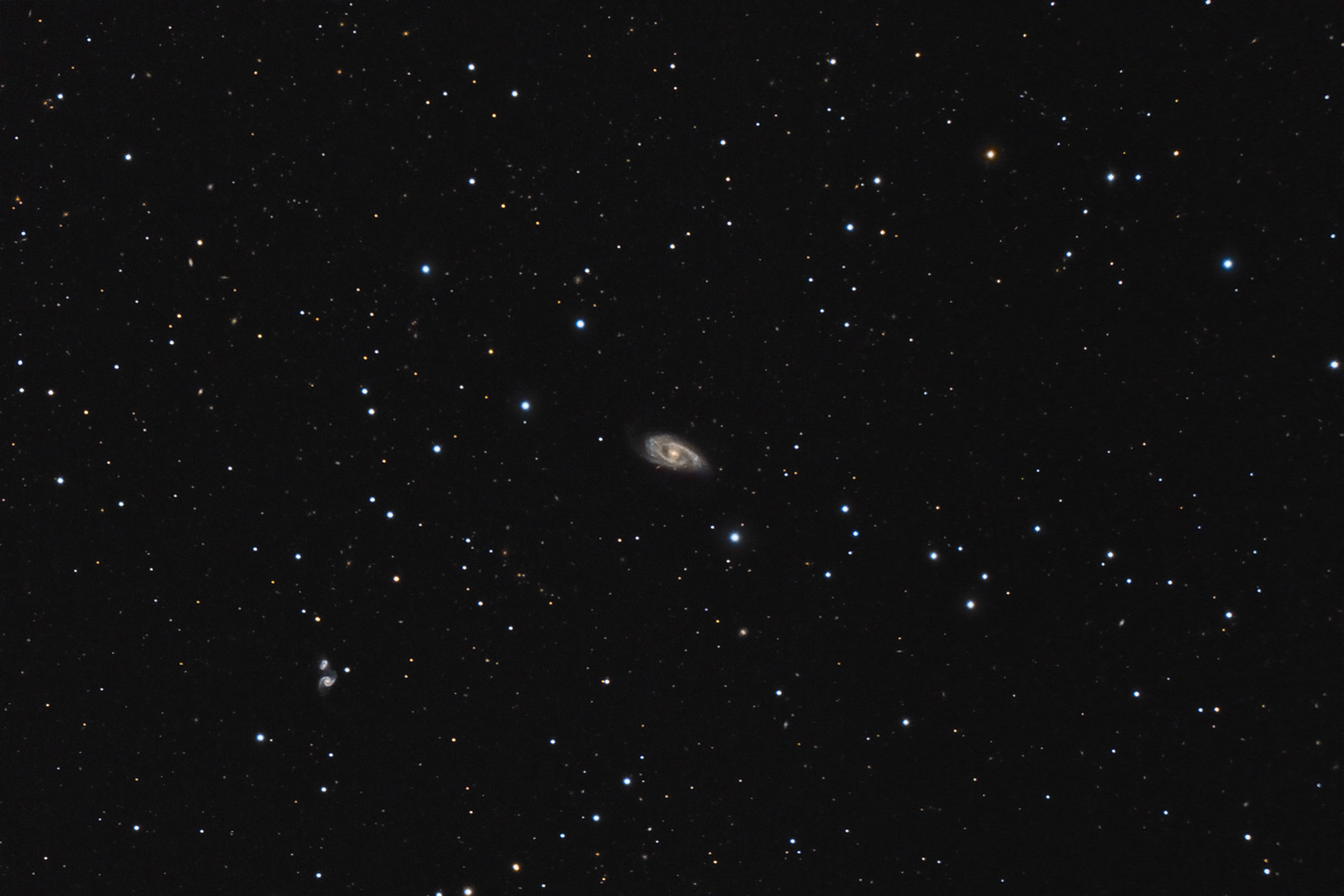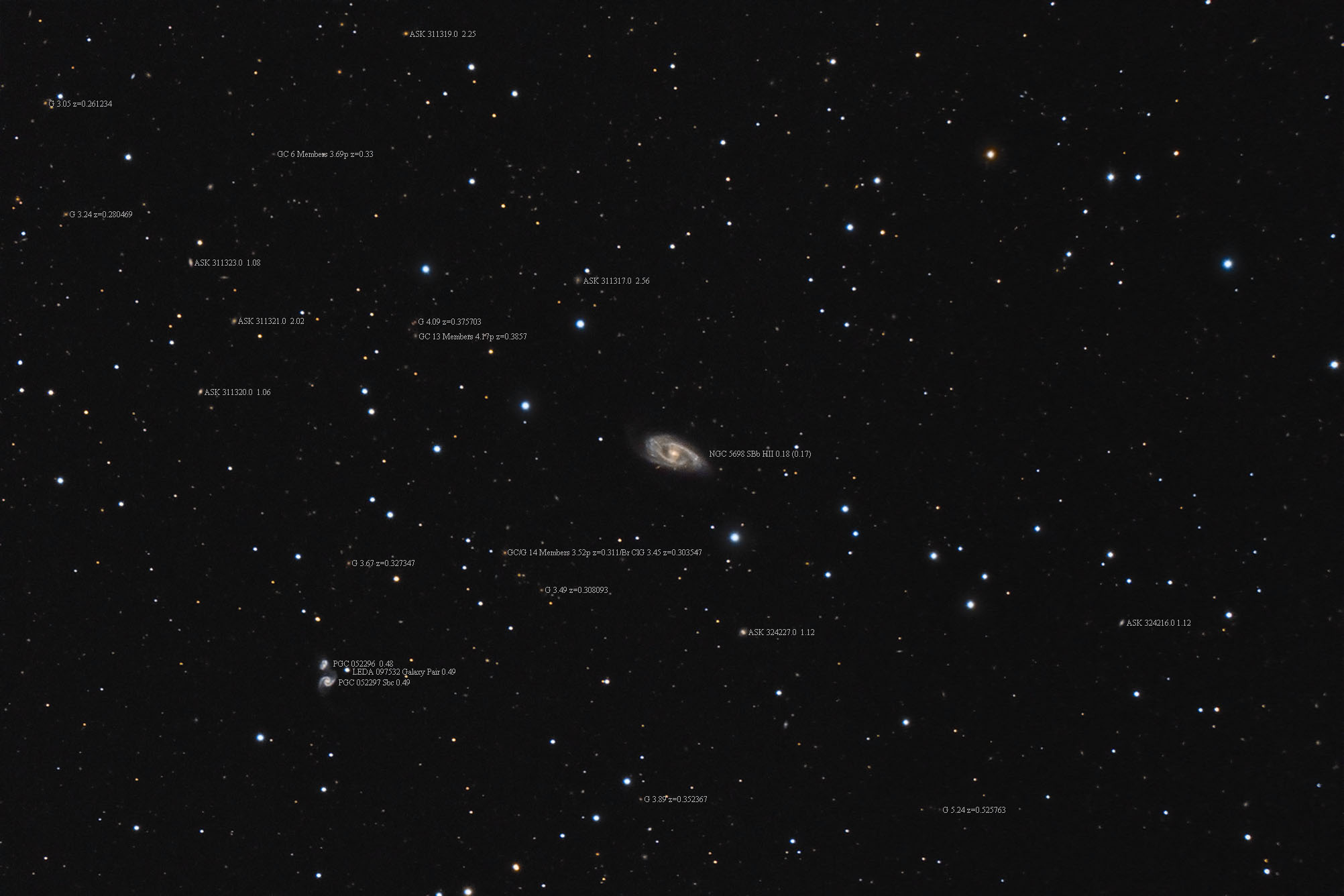| Description | Images |
Object name: NGC5698Designation(s): NGC5698, NGC 5698 is an SBb spiral in Bootes one degree east of Seginus (Gamma) Bootes. It has a rather strange ice cream cone shape with a faint drawn out arm or plume on the eastern side. Usually, such distortion is due to an interaction with another nearby galaxy. NGC 5732 is the nearest candidate with a similar redshift but is perfectly normal looking so probably isn't the culprit. I checked a few others in the area but they were either the wrong distance and/or undisturbed. It could be due to a merger but I found no papers discussing anything to do with its distorted shape or suggesting it has interacted with anything. So how it ended up looking like it does is still a mystery to me. If anyone knows more please let me know. Ignoring the plumes I get a size of 85,000 light-years. Including them, I get 135,000 light-years for a size assuming it is 180 million light-years from us as NED's redshift using the 5-year WMAP data shows. It was discovered by William Herschel on May 16, 1787 but didn't make either H400 observing program. Related Designation(s):2MASS J14371468+3827153, 2MASX J14371464+3827150, 2MASXi J1437147+382714, 2MIG 2006, AKARI J1437144+382708, ASK 324226.0, CGCG 1435.2+3840, CGCG 220-037, ECO 04775, FIRST J143714.7+382716, IRAS 14352+3840, IRAS F14352+3840, MCG +07-30-038, NGC 5698, NGC5698, NSA 056725, NVSS J143714+382718, PGC 052251, SDSS J143714.69+382715.2, SDSS J143714.69+382715.3, SDSS J143714.69+382715.4, SSTSL2 J143714.69+382715.8, UGC 09419, UZC J143714.8+382717, [dML87] 351, [PJY2015] 588017603622076464 , [TTL2012] 185373, |


